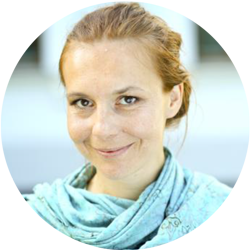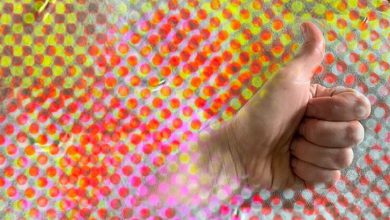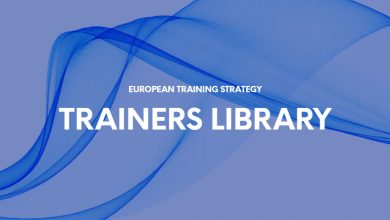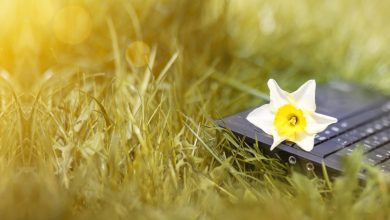How to keep your attention focused?
Attention involves directing your mind from undisciplined thinking towards specific thoughts or actions. Focus is a concentrated form of attention during which significant amounts of cognitive effort are exerted to sustain this state. Attention is the first step of learning. “We cannot understand, learn or remember that which we do not first attend to” (Glenda Thorne and Alice Thomas, 2009). However, attention is a finite resource. There is only so much information that can enter our consciousness at any given time. In this article we will discuss ways in which we can make best use of such a precious, yet limited resource.

Why did I choose this tool?
Being able to keep attention focused is an important prerequisite for any learning process to take place. Nowadays staying focused is becoming increasingly more difficult. This article will help the reader understand why this is so.
How does this apply to being a trainer?
The ability to regulate one’s attention is a key element for any learning process. Trainers can become aware of how they manage their attention and improve it.
Content:
Attention is more than just noticing stimuli. It comprises several processes such as the ability to select and focus on what is important, the ability to inhibit irrelevant actions or thoughts while simultaneously maintaining mental effort on the target actions and thoughts.
When attention is completely focused, the individual reaches the optimal state of consciousness for learning to take place. Thoughts, feelings, wishes, and actions all work in harmony.
How do we know we are focused? When focused, we are completely absorbed in the task, we lose the sense of self, the sense of time, and awareness of anything else, we feel enjoyment and intrinsic motivation (the joy of doing something just for the pleasure of doing it, not for the sake of an external goal).
To ensure focused attention for longer periods of time, we need to be conscious of how we match the difficulty of the task, its cognitive demands with our abilities. When our abilities are matched to the challenges demanded by a given activity, conditions are fulfilled for us to enter the state of effortless attention. If the demands of the task exceed our perceived abilities, this will generate anxiety and frustration. However, if the task is perceived to be too easy, it will breed boredom and apathy and, consequently, our minds will easily wander away (Bruya, 2010).
It is interesting that not every mind wandering is detrimental for the learning process. On the contrary, letting our mind drift away after we spent a certain amount of time and effort on a cognitively demanding task helps us learn better. This is known as diffused attention, a more relaxed state of attention which happens when we allow our minds to relax. During this time our brain processes newly learned concepts and makes new and unconscious connections in our brains (Oakley, 2019). Many people are familiar with the ‘Aha!’ moment in the shower. This is one example of how our brains operate in a state of diffused attention.
When it comes to taking care of our focused attention, we need to be wary that distractions, interruptions and multitasking are its greatest enemies. The truth about multitasking is that we don’t really do more things at the same time as we usually believe; what we actually do is rapidly switch our attention between several tasks. This only creates unnecessary strain on our minds.
Research has shown long ago just how harmful distractions are for our focus. A study carried out at London’s Institute of Psychiatry in 2005 discovered that constant interruptions and distractions at work caused a 10-point fall in employee’s IQ levels (Wilson, 20110). Moreover, it has been shown that we experience distractions approximately every 8 minutes, after which it takes 15-25 minutes to restore an optimal level of concentration (Mark, Gudith and Klocke, 2008).
When we allow ourselves to be distracted, i.e. when we switch our attention from one target to another and then back again, there is an effect that psychologists call “attention residue”. This can reduce our cognitive capacity for a significant amount of time before we are able to restore it again. If we constantly check anything outside the scope of our task, like various devices and social media accounts, we basically keep ourselves in a state of constant attention residue. This has adverse effects on our focus in the long-term (Newport, 2016).
The evidence is clear; for anyone working with their minds, the importance of the ability to regulate their attention cannot be stressed enough. Pay attention to your attention.
Exercise:
Do the following exercise every day for a month.
- Tackle one goal at a time. Focus on the most important task today.
My task for today is _____________________________________________________
- Do work that can be measured. Measurement gives us a sense of accomplishment and progress which encourages us to continue further.
How can I measure my progress today? ______________________________________________________________________
- While doing focused work, avoid so-called shallow work, i.e. work that is not cognitively demanding, is mostly of logistical nature and can be done at any time, such as answering emails.
I will do shallow work today only after I finish my main task for today. I will do it when?
______________________________________________________________________
- Schedule tasks for the time of the day when you feel that you have the most energy for it. If a task requires your full attention, then schedule it for a time of the day when you have the energy needed to focus.
Today I will do my main task when? _______________________________________________
- Work in short time periods strictly allotted for work that requires focused attention. Use the Pomodoro technique (25-30 minute work periods followed by 5 minute breaks).
Today I will work when? __________________________________________________
- Avoid social media or any other distractions during this time.
I vow to switch off any devices while I am doing today’s task.
Signature: ______________________
- Focus means saying “yes” to only one thing and saying “no” to many others. Pick which things you will say “no” to today.
I will say no to ___________________________________________________________
- Enjoy the process, not only the result. Focus on the activity itself for the sake of it and the pleasure it gives you, not just on the ultimate outcome.
What I like about my task for today is _______________________________________________________________________
Reflection questions:
- How did it feel to do this exercise?
- What was most challenging about it?
- What did you like about it?
- How did it affect your attention?
- From now on, could you establish a habit of treating all of your tasks in this way? What would it take?






